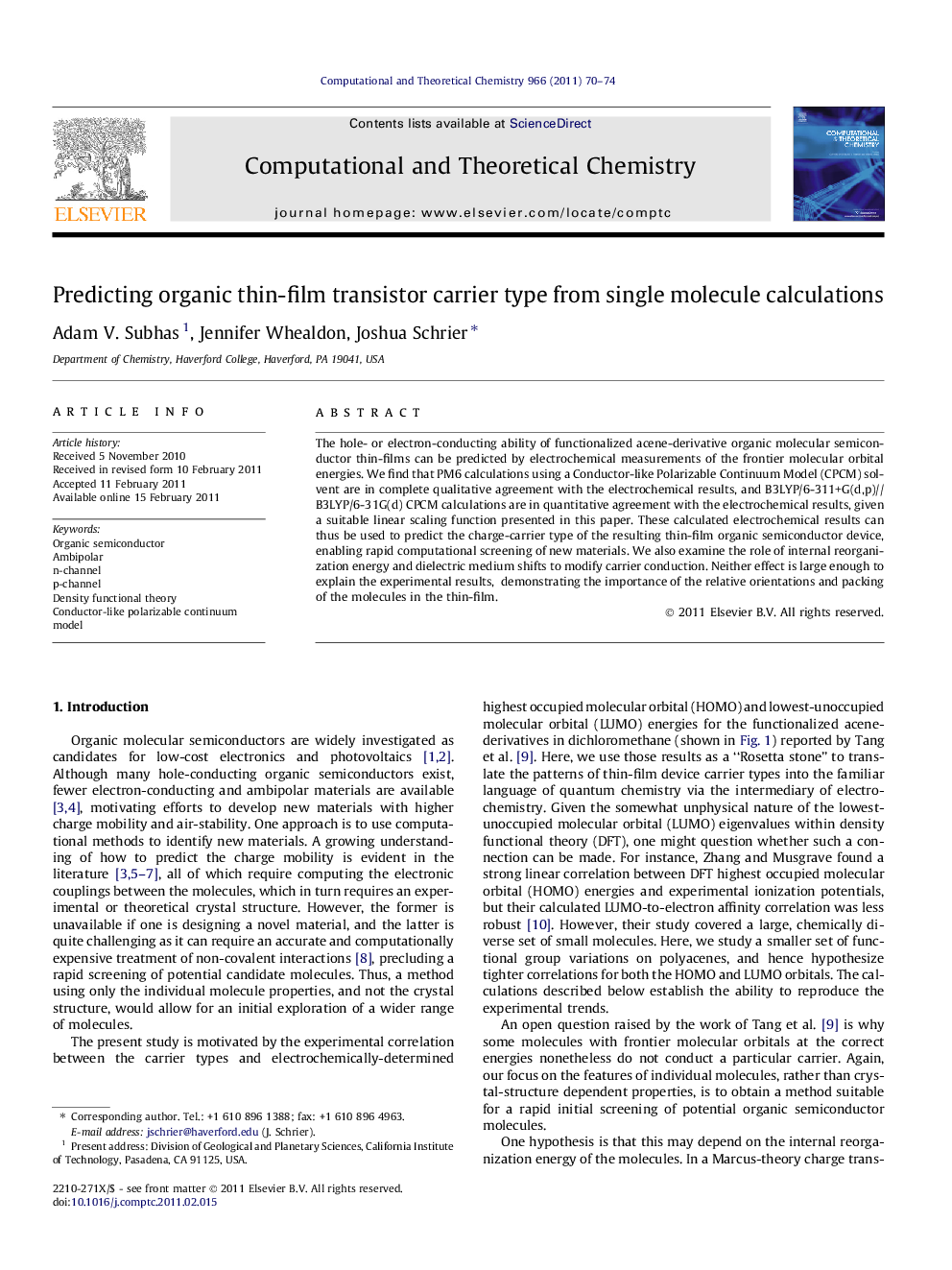| Article ID | Journal | Published Year | Pages | File Type |
|---|---|---|---|---|
| 5395230 | Computational and Theoretical Chemistry | 2011 | 5 Pages |
Abstract
The hole- or electron-conducting ability of functionalized acene-derivative organic molecular semiconductor thin-films can be predicted by electrochemical measurements of the frontier molecular orbital energies. We find that PM6 calculations using a Conductor-like Polarizable Continuum Model (CPCM) solvent are in complete qualitative agreement with the electrochemical results, and B3LYP/6-311+G(d,p)//B3LYP/6-31G(d) CPCM calculations are in quantitative agreement with the electrochemical results, given a suitable linear scaling function presented in this paper. These calculated electrochemical results can thus be used to predict the charge-carrier type of the resulting thin-film organic semiconductor device, enabling rapid computational screening of new materials. We also examine the role of internal reorganization energy and dielectric medium shifts to modify carrier conduction. Neither effect is large enough to explain the experimental results, demonstrating the importance of the relative orientations and packing of the molecules in the thin-film.
Keywords
Related Topics
Physical Sciences and Engineering
Chemistry
Physical and Theoretical Chemistry
Authors
Adam V. Subhas, Jennifer Whealdon, Joshua Schrier,
